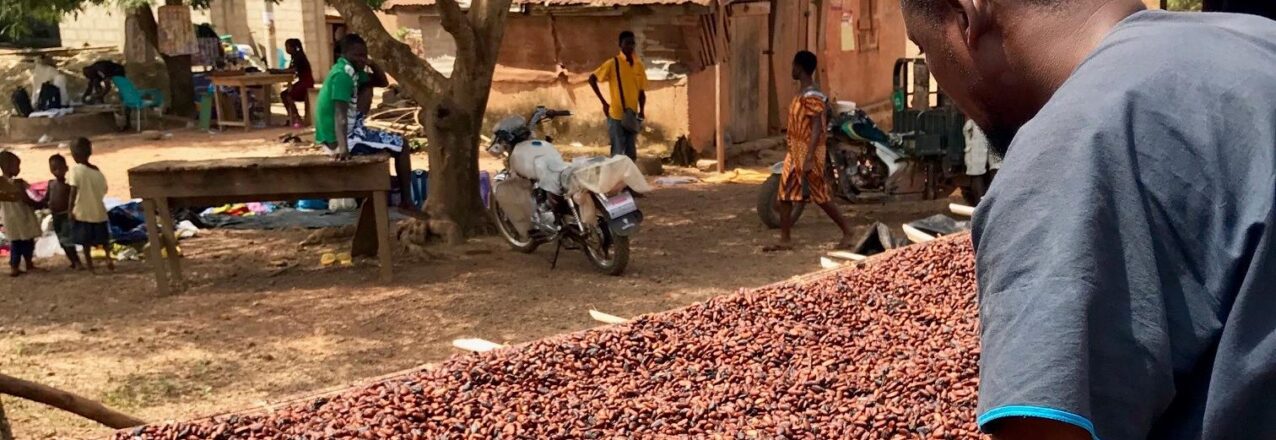EXECUTIVE SUMMARY
This report provides baseline context for the mixed-methods impact evaluation (IE) of the “Supporting Deforestation-Free Cocoa in Ghana” project Bridge Phase activity that has been commissioned by the United States Agency for International Development’s (USAID) Office of Land and Urban in the Bureau for Economic Growth, Education, and Environment (USAID/E3/LU). The evaluation aims to provide an evidence base for outcomes of the Bridge Phase activities with respect to strengthening land rights and land governance, reducing deforestation, increasing carbon sequestration and cocoa productivity, and enhancing local livelihoods. The evaluation is led by NORC at the University of Chicago, under the Communications, Evidence and Learning (CEL) Project.
This document provides findings from the baseline data collection for the evaluation, including background context on key demographics, household characteristics, and baseline measures on outcome variables. The report also examines balance across Bridge Phase and comparison group villages for the IE components of the evaluation, revisits power calculations from the Evaluation Design Report (EDR) using parameters from the baseline data, and provides an update on the viability of evaluating the farm rehabilitation component of the Bridge Phase activity, given a reduction in the number of beneficiaries receiving this intervention as learned at baseline.
BRIDGE PHASE ACTIVITY DESCRIPTION
The Integrated Land and Resource Governance (ILRG) Task Order under the Strengthening Tenure and Resource Rights II (STARR II) Indefinite Delivery/Indefinite Quantity (IDIQ), is supporting work on sustainability of deforestation-free cocoa through the “Supporting Deforestation-Free Cocoa in Ghana” (SDFC) project Bridge Phase. The ILRG program is implemented by an international consortium including the prime contractor, Tetra Tech, and core subcontractors, including Winrock.
The ILRG activity seeks to refine three interventions through a “Bridge Phase” period, and then scale up a financially viable farm rehabilitation and land tenure strengthening model for the Ghanaian cocoa sector. In combination with land use planning, the scaled activity aims to result in: reduced deforestation and greenhouse gas (GHG) emissions and increased carbon sequestration in the cocoa landscape, increased cocoa farm productivity and resilience, diversified farmer incomes, and improved livelihoods. Implementation of the Bridge Phase is through a partnership across ILRG and three private sector partners: Ecom Agroindustrial Corp. (ECOM), the Hershey Company (Hershey), and Meridia. The Bridge Phase activity has three intervention components: (1) cocoa farm rehabilitation led by ECOM that is provided to a small group of registered farmers; (2) farm mapping and provisioning of tenure documentation to all interested farmers in the four Bridge Phase communities; and (3) landscape governance and land use planning activities implemented at village and district levels.
EVALUATION QUESTIONS
Table 1 lists the six questions addressed by the SDFC Bridge Phase evaluation. The evaluation questions, which the team developed in collaboration with USAID, focus on meeting USAID’s priority learning interests for this activity and were derived from the SDFC Bridge Phase theory of change.


